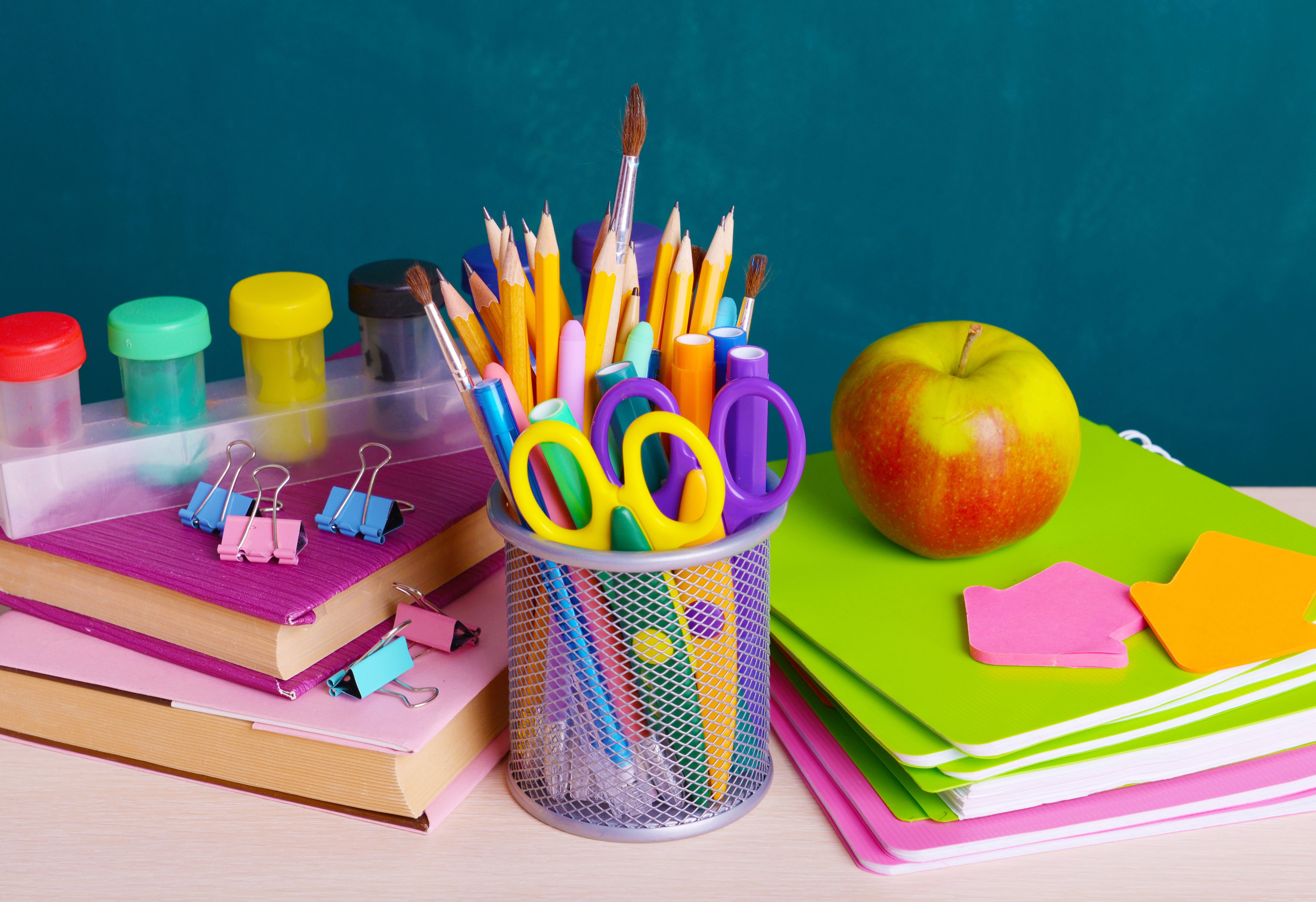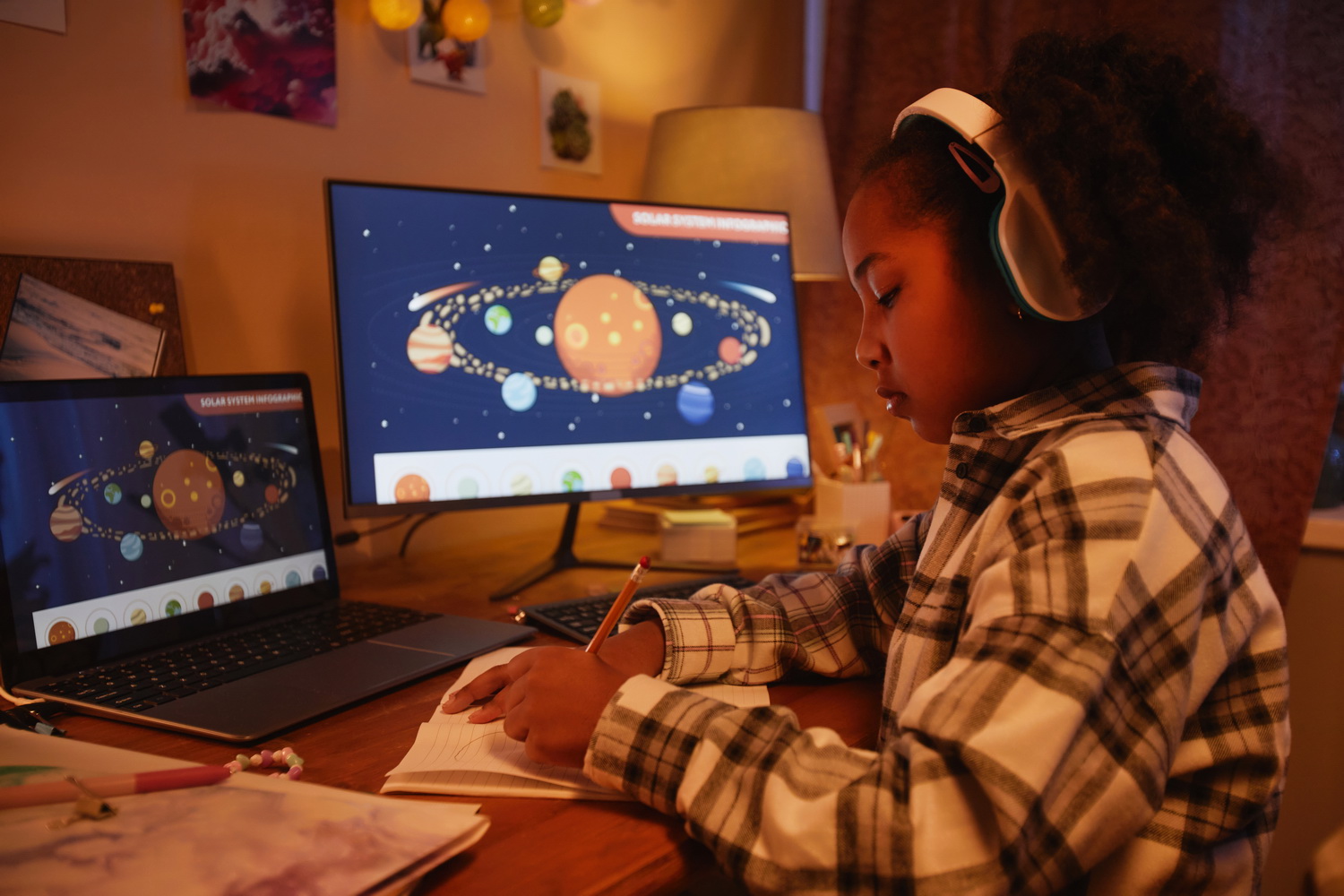6 Ideas to Create the Perfect Study Space for Your Elementary Student
Sept. 8, 2023
The elementary school years are a critical time for children; not only are kids learning academic skills and subjects, but they also build crucial life skills that help them to unlock their potential for success. How they learn and practice concepts is just as important as what they learn. That’s why forming healthy study habits as early as possible is so important for young learners.
Studying and managing their own learning isn’t something that comes naturally to kids. Who could blame them for wanting to spend their time after school watching TV or playing video games? Even so, parents can help nudge their children along and into a new studying routine.
With a new school year just beginning, now is the best time to instill or reinforce healthy study habits with the inspiring study space for your kiddo. Consider the following ideas for designing the perfect study space for your elementary student:
1. Choose a quiet space in the house free from distractions.
There are no doubt high-traffic areas inside your home that could only serve as a distraction for most kids. The best study space in a house will likely be a room that is free from interruptions, like heavy foot traffic by family members or pets. Some rooms may contain tempting technology, like video game consoles and a TV. For some households a spare bedroom or office may serve well, or even the dining room may work depending on the house’s floorplan. Regardless, choose a space where children can concentrate without distractions from family, pets, or tech.

2. If possible, don’t choose your kid’s bedroom.
After reading the tip above, a child’s bedroom might seem like the ideal location for a study room considering that it probably is located away from high-traffic areas of the house. However, studying in one’s own bedroom is never recommended for studying because it is most associated with sleep. Children should avoid the urge to sit or lay on their bed while studying simply because they may soon feel tired and doze off.
In addition, allowing your kids to study in their rooms may disrupt their sleep habits. Ultimately, a bedroom should be seen as a place to go to relax and wind down; it offers a secure environment to drift off to sleep in comfort. As kids grow older, they will have more homework and may feel added pressures and stress to succeed. If they learn to study and complete homework in their bedrooms, they may struggle to sleep. If possible, look for another space in the house, like a corner in the dining room, office area, or an old playroom.
3. Consider your child’s academic needs.
Before rushing out to buy a desk, parents should take a step back and consider the age, grade level, and potential workload that their kid may face. A kindergartener may need a larger table and more storage for items such as Play Doh, crayons, and math manipulatives, while a 4th grader would have more use for a desk and storage for paper, pencils, and more traditional school supplies. Select a desk, a chair, and storage solutions that are age and grade appropriate and tweak the setup as the student grows older.
4. Make sure it’s comfortable, but not too comfortable.
Many contemporary classrooms have flexible seating using exercise balls or wiggle seats to help children who struggle to concentrate for long periods of time and need to move. As the parent, you know your child best. If a wiggle seat is needed to help a student concentrate, then be sure to put one on your shopping list.
Proper lighting is also an important consideration. Some kids are prone to headaches when overhead lights are too bright, while dim lights may contribute to eyestrain and make already exhausted students drowsier.
Conversely, it’s just as important to make sure the room isn’t too comfortable. Just like studying on a bed, a room that is outfitted with plush bean bag chairs might make it more conducive to napping than working on homework. A study space should feel inviting and comfortable, but not so comfortable that it lulls a student to sleep.
5. Choose accessories to help little learners stay organized.
Beyond furniture, there are other aspects of the room to consider, especially when it comes to wall space and organization. Kids are notorious for stuffing papers into their backpacks and forgetting due dates, but their new study space can help teach them to stay organized!
- Shop for accessories that will help them stay on track, like a large dry erase calendar that can be hung on a wall nearby their desk or table. Use the calendar like a planner to keep a to-do list or use it to plan a nightly homework and reading routine by writing down how long kids will spend on each subject on specific days.
- Purchase a colorful accordion file to keep learning worksheets neatly filed by subject.
- Consider a cork board to hang up their best work.
- Find easy-to-read analog clocks to ensure that children keep their clock-reading skills sharp while also helping them to manage their time.
6. Embrace your child’s creativity; let them decorate the space!
Students feel more comfortable in their surroundings when they have a sense of ownership and identity. Allowing kids to contribute to the design of their study area can give them an extra boost in motivation and confidence that will carry them through tough homework sessions when the school year is well underway. With that in mind, decorating doesn’t have to be extensive or expensive! Encourage children to hang up their favorite homemade crafts, artwork, or pictures. Allow them to help paint the desk, or simply to add stickers to make the area feel more like their own.

A child’s habits and attitude surrounding school and learning forms very early in life. Since kids aren’t naturally born with effective study habits, it’s up to parents to teach them to own their learning by setting aside time and space to study and complete their work. Teaching good study habits empowers them by increasing their independence and helping children to cultivate a healthy respect for the learning process. Get started today by designing your learner’s perfect study space and watch them blossom over the course of the school year!
by Lori Toney,
ELA teacher and mother of three elementary students











